I couldn't agree more with you in regards to people who don't get to feel the joy and passion with something they love. Its really a pity. We are very fortunate!!I feel the exact opposite. With what we all do, there is no need for counseling. People that don't have the joy that audio or some other cool hobby brings are the ones who need counseling.
Taiko Audio SGM Extreme : the Crème de la Crème
- Thread starter CKKeung
- Start date
You are using an out of date browser. It may not display this or other websites correctly.
You should upgrade or use an alternative browser.
You should upgrade or use an alternative browser.
“Exciting“ seems like too timid a word to describe what Emile, et al,@Taiko Audio are about to unleash upon the world of audio! For those of us that use an Edgerouter with our ATT setup, will the Taiko router replace or be an addition to the network chain?
It can be used both ways.
What does it say? We are talking about the world's first Audiophile Router.Bugger, the first ~30 lbs router then ?
It is also the audiophile router.That product is also a Roon endpoint, I think, so a different product.
It is also the audiophile router.
Actually, it isn't full function so it couldn't replace one's ISP router.
Will the electrical supply be 12 volt?Well we have a long road ahead of us with regards to possibilities and functionality. I'll list a few initial features:
-We are going to run a hypervisor on it so it can run multiple operating systems.
-One of those virtual machines can run Ubiquity software to manage a whole network of Ubiquity Access Points / Products if so desired (or possibly other brands, we use Ubiquity ourselves)
-Another virtual machine can run streaming preprocessing to improve online streaming performance for Roon
-Yet another virtual machine could run a future part of XDMS
-It can act like a NAS (music storage)
-Split youtube into separate audio and video streams
-All 5 ports can be configured as separate networks
-It can be used to replace your ISP supported router if your ISP supports replacing your router, to that end, and because this is high-end, it runs the highest possible security level, guaranteed safer as your ISP modem/router, a 5 year support maintenance contract with several update options will be included, which can, and will need to be extended to stay safe in such a scenario, after (the cost for this contract is EURO 50 a year), it can also be used to create a separate network in series with your ISP or whatever other router
-Etc etc and whatever else we can come up with, years of fun ahead!
YesWill the electrical supply be 12 volt?
NoDoes the router also have to be near the Switch, like the case for Switch to Extreme?
Steve Williams
Site Founder, Site Co-Owner, Administrator
Steve-why don't you take a relax. This thread is about Taiko Audio and Emile corrected himself. Why don't you come back and talk to we Taiko users. after all of the upgrades and XDMS are completed. Short of that you're just idle noise in the windWhat does it say? We are talking about the world's first Audiophile Router.
I know Emile has yet to run his xls-calculations. Still hoping though that network card & switch are clearly below the 10k mark, ideally below 5k. But reading how heavy it is makes me worry a bit about raw material costs. On the other hand it’s relatively compact in size and from my understanding it‘s the large dimensions of the Extreme chassis and battery supply that let costs easily skyrocket, whereas the switch doesn’t need these huge chunks of aluminum. So fingers crossed for an affordable price point. 
I know Emile has yet to run his xls-calculations. Still hoping though that network card & switch are clearly below the 10k mark, ideally below 5k. But reading how heavy it is makes me worry a bit about raw material costs. On the other hand it’s relatively compact in size and from my understanding it‘s the large dimensions of the Extreme chassis and battery supply that let costs easily skyrocket, whereas the switch doesn’t need these huge chunks of aluminum. So fingers crossed for an affordable price point.
10K is not a fair price for a switch, even 5K is pushing it in my book. We did however spend serious amounts on R&D in this case as we developed multiple switches only to discover that just designing a “lower noise” device does not solve that much beyond sounding a bit better in one area or another. We also don’t expect all Extreme owners to purchase one which would make it easier to calculate a break even point.
Steve-why don't you take a relax. This thread is about Taiko Audio and Emile corrected himself. Why don't you come back and talk to we Taiko users. after all of the upgrades and XDMS are completed. Short of that you're just idle noise in the wind
I’ve edited my initial post to include Internet (in bold):
Indeed, fresh in what, AFAIK, is the world's first Audiophile Internet Router! :
That sounds promising! To be clear I was referring to the combo of switch and the network card (which might be in USB card territory price wise). Anyway, I seems to be in a range where it won‘t cause severe financial headaches. Which is goooooood and another part of the fantastic Taiko value proposition. Thank you for keeping high(est) end sonics at non-stratospheric price points!10K is not a fair price for a switch, even 5K is pushing it in my book. We did however spend serious amounts on R&D in this case as we developed multiple switches only to discover that just designing a “lower noise” device does not solve that much beyond sounding a bit better in one area or another. We also don’t expect all Extreme owners to purchase one which would make it easier to calculate a break even point.
Why did we end up designing both a switch and a router?
I'm attempting to write this in as non technical language as I can but please let me know if it still reads like total gibberish (as in understandable, not gibberish as in you don't believe any of this has anything to do with sound quality).
First off all, after years of trying and experimenting we have not found a single solution leading to full immunization to the influence of networking on sound quality. This network is an active components in your home. A perhaps shocking discovery is that your home network can even influence your analogue playback chain. Every component of your network exerts a degree of influence, ranging from very minor to mayor. What this simply means is that when you introduce any type of streaming digital source into your system (and even when you don't) and you care about sound quality, you should absolutely look at the whole picture, including every single component and piece of wire, not identical to but similar as to how you look at for example your power utility setup, where the utility breaker box, fuses and all bits of wire make a difference.
A router is like the airport / main distribution center of your network, it performs customs clearance on international packages, checks for illegal content, sorts and transports all packages to where they should arrive in a timely and organised fashion. It should have plenty of capacity to ensure everything runs smooth and in a timely fashion, good management and quality control departments.
A switch is like your local post office / distribution center, it needs a well maintained road system and a fleet of delivery trucks with good suspension so packages arrive undamaged at their final destination even when encountering a few bumps in the road and last but not least well mannered delivery guys.
In audiophile language, using the earlier mentioned power utility setup analogy your house mains utility distribution box would be the router, your in-wall wiring would be the ethernet cable running from the router, your local system power strip or power conditioner would be the switch and your power cord would be your ethernet cable. Perhaps unsurprisingly their respective degrees of influence on sound quality are very similar. The router being the mains utility distribution box in this example can furthermore be enhanced with things like power regeneration, cleaning, stabilization etc.
From this point on it's going to get unavoidably more technical as I'm now going to share a photo of a 3D print of the switch PCB which will reveal that the switch employs 2 SFP ports exclusively. Small form-factor pluggable, or SFP, devices enable the switch to connect to fiber and Ethernet cables of different types and speeds by using SFP modules which are available in both copper, RJ45 and fiber versions.
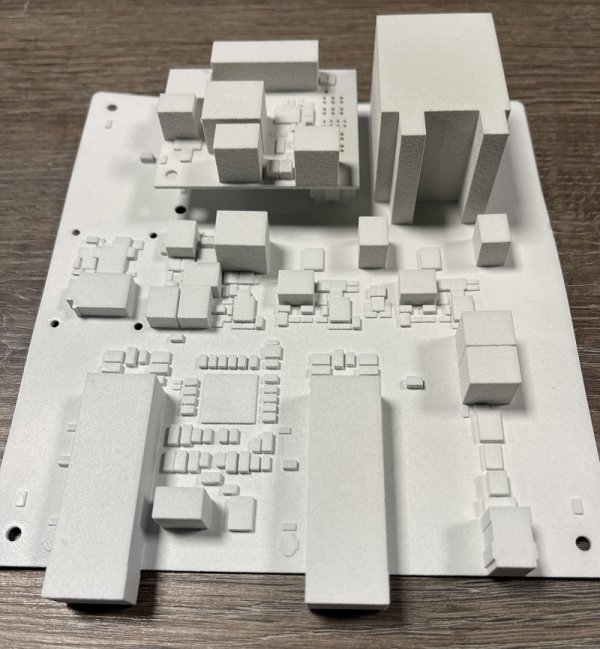
For clarity / comparative reasons a repost of the router PCB photo:
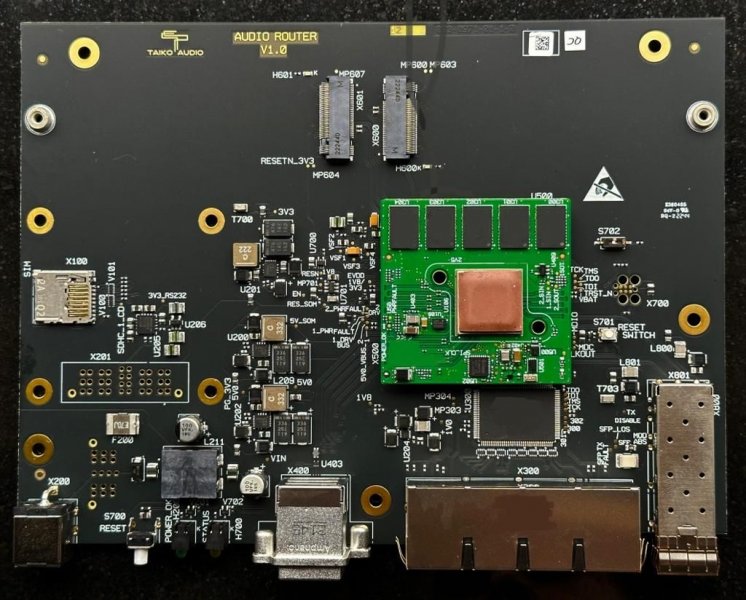
And a photo of a fiber and a copper SFP module:
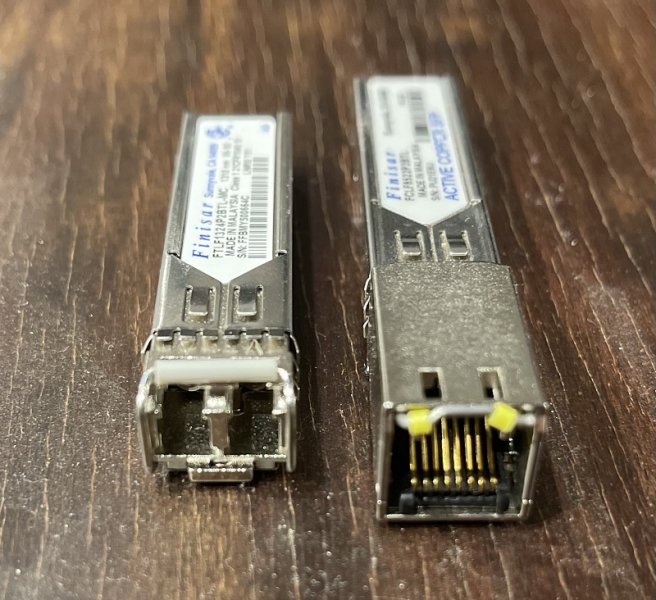
I'm attempting to write this in as non technical language as I can but please let me know if it still reads like total gibberish (as in understandable, not gibberish as in you don't believe any of this has anything to do with sound quality).
First off all, after years of trying and experimenting we have not found a single solution leading to full immunization to the influence of networking on sound quality. This network is an active components in your home. A perhaps shocking discovery is that your home network can even influence your analogue playback chain. Every component of your network exerts a degree of influence, ranging from very minor to mayor. What this simply means is that when you introduce any type of streaming digital source into your system (and even when you don't) and you care about sound quality, you should absolutely look at the whole picture, including every single component and piece of wire, not identical to but similar as to how you look at for example your power utility setup, where the utility breaker box, fuses and all bits of wire make a difference.
A router is like the airport / main distribution center of your network, it performs customs clearance on international packages, checks for illegal content, sorts and transports all packages to where they should arrive in a timely and organised fashion. It should have plenty of capacity to ensure everything runs smooth and in a timely fashion, good management and quality control departments.
A switch is like your local post office / distribution center, it needs a well maintained road system and a fleet of delivery trucks with good suspension so packages arrive undamaged at their final destination even when encountering a few bumps in the road and last but not least well mannered delivery guys.
In audiophile language, using the earlier mentioned power utility setup analogy your house mains utility distribution box would be the router, your in-wall wiring would be the ethernet cable running from the router, your local system power strip or power conditioner would be the switch and your power cord would be your ethernet cable. Perhaps unsurprisingly their respective degrees of influence on sound quality are very similar. The router being the mains utility distribution box in this example can furthermore be enhanced with things like power regeneration, cleaning, stabilization etc.
From this point on it's going to get unavoidably more technical as I'm now going to share a photo of a 3D print of the switch PCB which will reveal that the switch employs 2 SFP ports exclusively. Small form-factor pluggable, or SFP, devices enable the switch to connect to fiber and Ethernet cables of different types and speeds by using SFP modules which are available in both copper, RJ45 and fiber versions.

For clarity / comparative reasons a repost of the router PCB photo:

And a photo of a fiber and a copper SFP module:

Last edited:
Intriguing, @Taiko Audio! The fact that there's only 2 SFP+ ports implies that a switch HAS to be used with the router, then...
EDIT: Sorry, didn't notice that you said "switch PCB" not "router PCB". Please ignore!
Going by the analogy a two port switch is like a post office that serves only one house
EDIT: Sorry, didn't notice that you said "switch PCB" not "router PCB". Please ignore!
Going by the analogy a two port switch is like a post office that serves only one house
Why did we end up designing both a switch and a router?
I'm attempting to write this in as non technical language as I can but please let me know if it still reads like total gibberish (as in understandable, not gibberish as in you don't believe any of this has anything to do with sound quality).
First off all, after years of trying and experimenting we have not found a single solution leading to full immunization to the influence of networking on sound quality. This network is an active components in your home. A perhaps shocking discovery is that your home network can even influence your analogue playback chain. Every component of your network exerts a degree of influence, ranging from very minor to mayor. What this simply means is that when you introduce any type of streaming digital source into your system (and even when you don't) and you care about sound quality, you should absolutely look at the whole picture, including every single component and piece of wire, not identical to but similar as to how you look at for example your power utility setup, where the utility breaker box, fuses and all bits of wire make a difference.
A router is like the airport / main distribution center of your network, it performs customs clearance on international packages, checks for illegal content, sorts and transports all packages to where they should arrive in a timely and organised fashion. It should have plenty of capacity to ensure everything runs smooth and in a timely fashion, good management and quality control departments.
A switch is like your local post office / distribution center, it needs a well maintained road system and a fleet of delivery trucks with good suspension so packages arrive undamaged at their final destination even when encountering a few bumps in the road and last but not least well mannered delivery guys.
In audiophile language, using the earlier mentioned power utility setup analogy your house mains utility distribution box would be the router, your in-wall wiring would be the ethernet cable running from the router, your local system power strip or power conditioner would be the switch and your power cord would be your ethernet cable. Perhaps unsurprisingly their respective degrees of influence on sound quality are very similar. The router being the mains utility distribution box in this example can furthermore be enhanced with things like power regeneration, cleaning, stabilization etc.
From this point on it's going to get unavoidably more technical as I'm now going to share a photo of a 3D print of the switch PCB which will reveal that the switch employs 2 SFP ports exclusively. Small form-factor pluggable, or SFP, devices enable the switch to connect to fiber and Ethernet cables of different types and speeds by using SFP modules which are available in both copper, RJ45 and fiber versions.
View attachment 101140
Of course this will again open up a whole bunch of variables with "best sounding" SFP+ modules reminiscent of the old days with the SFP+ card...Intriguing, @Taiko Audio! The fact that there's only 2 SFP+ ports implies that a switch HAS to be used with the router, then...
EDIT: Sorry, didn't notice that you said "switch PCB" not "router PCB". Please ignore!
Is copper still the king? I have a ton of Mikrotik S+RJ10 10GBase-T modules that I use, have not tried others.
Intriguing, @Taiko Audio! The fact that there's only 2 SFP+ ports implies that a switch HAS to be used with the router, then...
EDIT: Sorry, didn't notice that you said "switch PCB" not "router PCB". Please ignore!
Going by the analogy a two port switch is like a post office that serves only one house
I have added 2 photos to make things more clear.
Of course this will again open up a whole bunch of variables with "best sounding" SFP+ modules reminiscent of the old days with the SFP+ card...
Is copper still the king? I have a ton of Mikrotik S+RJ10 10GBase-T modules that I use, have not tried others.
Hopefully not, more to follow
I have added 2 photos to make things more clear.
Hopefully not, more to follow
*starts drilling holes for fiber from basement to music room*
Why did we end up going for the SFP interface in stead of the usual RJ45?
The ethernet cabling system we use in our homes is designed to transport large amounts of data at high speeds over an as economical as possible cabling system. For this to work it uses block coding and error correction to enable data to pass through a cheap (economical) cable and connector system without error. The block encoding requires reading the data block into the transmitter, running a mathematical function on the data, and sending the encoded data over the link. The opposite happens at the receiving end and error correction is applied.
A graphical display of error correction:
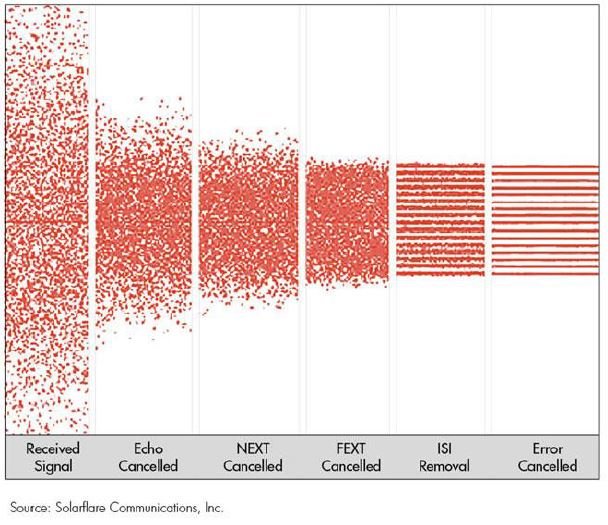
To give you an indication of the processing overhead, this is standardized to take 2.6 microseconds where the actual data transfer latency is 0.1 microseconds for fiber and 0.3 microseconds for copper (or times 8.6 for copper and times 26 for fiber). But more important is the increase in power consumption which is between 5 and 25 times higher for RJ45 over SFP (for EACH port).
At a first glance SFP fiber appears to be the ideal solution, unfortunately it is not as straight forward as that as a SFP fiber module, which converts an electrical into an optical signal, uses a substantial amount of power. A single fiber SFP module consumes more power then our entire final switch design, the additional noise this generates is multiple times higher then that of the switch itself.
So our soup of today consists of an accumulation of several types of noise:
-Processing noise
-Noise generated by power consumption (and associated heat)
-Interface noise
We have managed to achieve the absolute lowest possible noise by minimizing these 3 by designing a network card and switch for producing the lowest possible noise, consuming the lowest possible power, with the least possible processing overhead around using a so called DAC SFP cable between Network card and Switch, which looks like this:
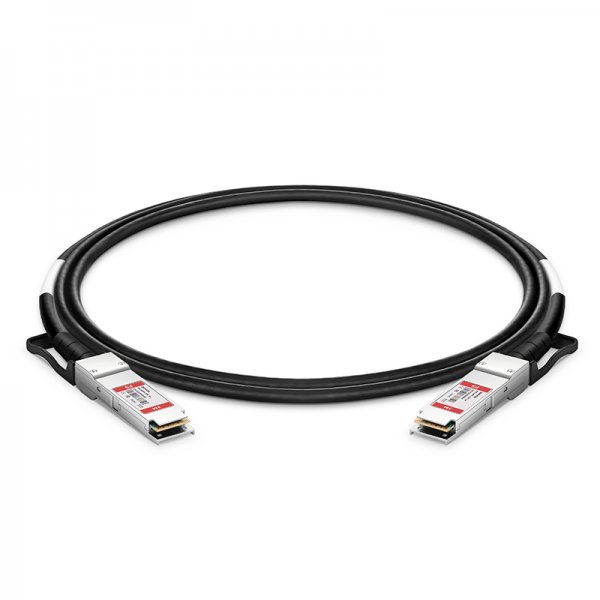
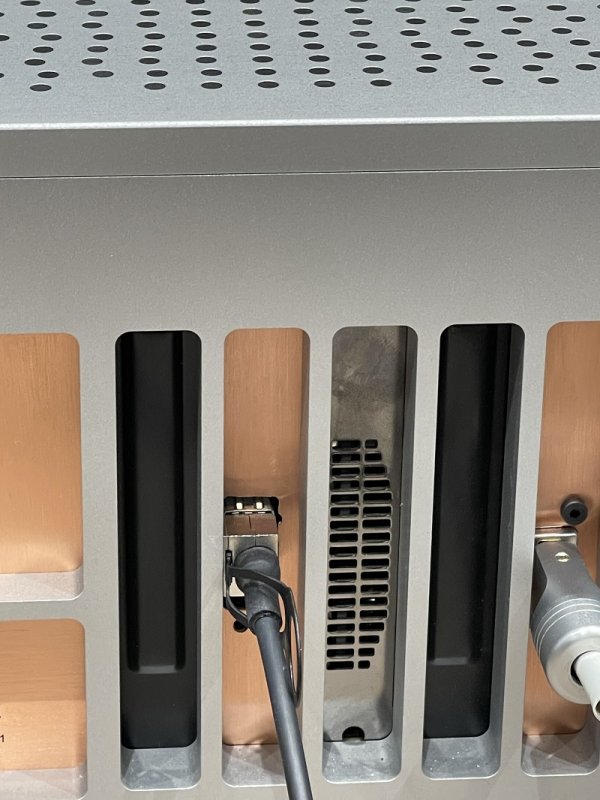
Now we already had a SFP card fitted in the Extreme in that position, however that was not a design with the lowest possible noise in mind and it does not support the not yet mentioned software enhancements which is a story for another day as I have a nice Lampizator Horizon tube rolling session scheduled for the remainder of this afternoon
The ethernet cabling system we use in our homes is designed to transport large amounts of data at high speeds over an as economical as possible cabling system. For this to work it uses block coding and error correction to enable data to pass through a cheap (economical) cable and connector system without error. The block encoding requires reading the data block into the transmitter, running a mathematical function on the data, and sending the encoded data over the link. The opposite happens at the receiving end and error correction is applied.
A graphical display of error correction:

To give you an indication of the processing overhead, this is standardized to take 2.6 microseconds where the actual data transfer latency is 0.1 microseconds for fiber and 0.3 microseconds for copper (or times 8.6 for copper and times 26 for fiber). But more important is the increase in power consumption which is between 5 and 25 times higher for RJ45 over SFP (for EACH port).
At a first glance SFP fiber appears to be the ideal solution, unfortunately it is not as straight forward as that as a SFP fiber module, which converts an electrical into an optical signal, uses a substantial amount of power. A single fiber SFP module consumes more power then our entire final switch design, the additional noise this generates is multiple times higher then that of the switch itself.
So our soup of today consists of an accumulation of several types of noise:
-Processing noise
-Noise generated by power consumption (and associated heat)
-Interface noise
We have managed to achieve the absolute lowest possible noise by minimizing these 3 by designing a network card and switch for producing the lowest possible noise, consuming the lowest possible power, with the least possible processing overhead around using a so called DAC SFP cable between Network card and Switch, which looks like this:


Now we already had a SFP card fitted in the Extreme in that position, however that was not a design with the lowest possible noise in mind and it does not support the not yet mentioned software enhancements which is a story for another day as I have a nice Lampizator Horizon tube rolling session scheduled for the remainder of this afternoon
*starts drilling holes for fiber from basement to music room*
So our recommendation (if you want the lowest possible noise) is:
-RJ45 from router to switch as it still uses less power then dual fiber SFP modules (for which you need a SFP RJ45 module (which we intend to supply with the package)
-SFP DAC twinax copper cable from switch to Extreme (which we intend to supply with the package)
Similar threads
- Replies
- 250
- Views
- 51K
- Replies
- 320
- Views
- 59K
| Steve Williams Site Founder | Site Owner | Administrator | Ron Resnick Site Owner | Administrator | Julian (The Fixer) Website Build | Marketing Managersing |


